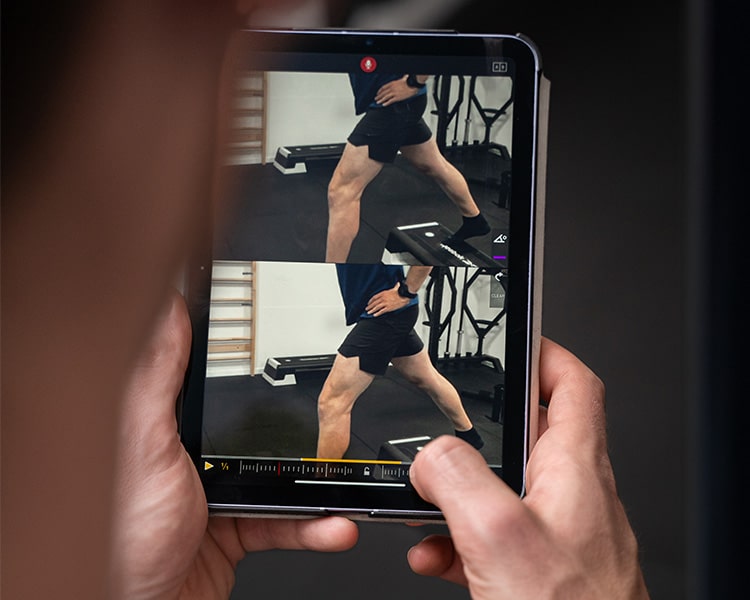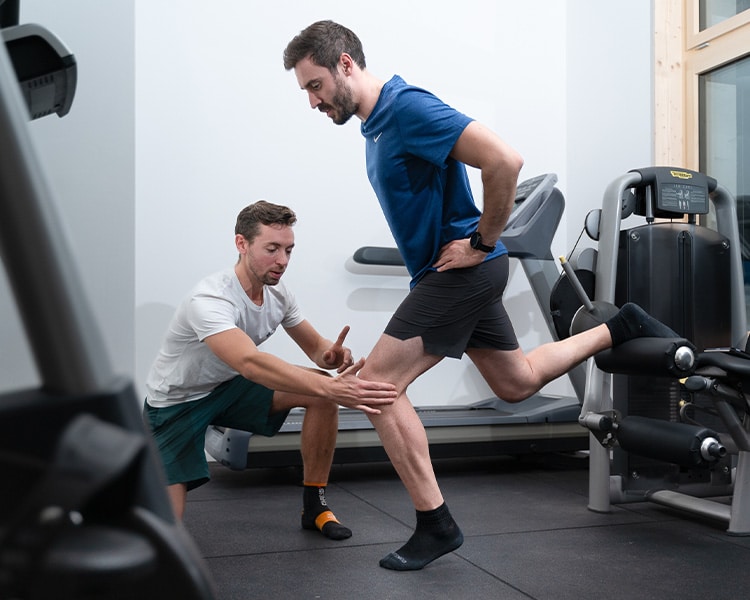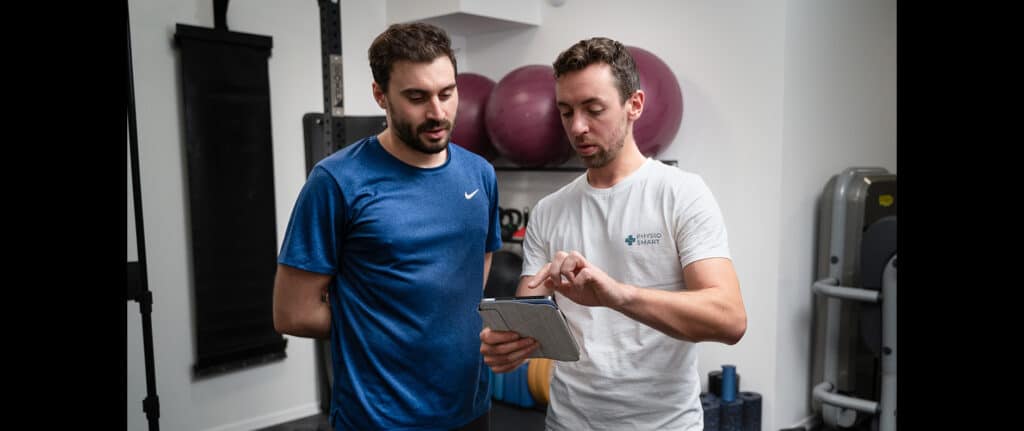Physiosmart is a physiotherapy practice equipped with the latest technology that allow patients to reach or regain their optimal level of performance.
To help professional or amateur athletes recover from injury or surgery and be ready to fully return to sport, Théo and his team use several techniques, such as stretching, manual therapy, and muscle-strengthening exercises.
In 2023, Théo began to use myDartfish Mobile (a video-based motion analysis mobile app) to analyze his patients’ motion and techniques when they perform exercises in his practice. It helps him monitor patients’ progress, evaluate neuromuscular control, and identify any residual deficits in movement patterns or muscle function that may pose a risk for reinjury if the patient returns to sport too soon.
Two-dimensional Video-based Motion Analysis (VBMA)
Traditional naked-eye observation isn’t as accurate as video observation.
Indeed, videos of movements can be replayed and slowed to enable specific viewing of each body region of interest in different movement planes for improved accuracy and a more nuanced examination.

myDartfish Mobile app allows Théo to replay a video sequence he has just captured with his phone and, to play it in slow motion up to ⅛ speed, or frame by frame. He can also zoom in/out in the video to analyze in detail some points and make side-by-side video comparisons.
“Video analysis allows us to build a detailed and accurate assessment of our patients’ techniques, helping us identify any injury risk factors, muscle weakness, or overactivation”.
Involve the Patient in His/Her Rehab
As patients become more involved in their rehabilitation, they develop a sense of self-efficacy. This self-belief helps patients overcome challenges and reach their rehabilitation goals more easily.
Video-based motion analysis is a valuable tool for involving patients in their rehab. It encourages self-assessment and facilitates open communication.
Indeed, video analysis offers the following benefits:
- Provides objective feedback that helps patients identify what is right or wrong in their body mechanics without relying solely on subjective assessments.
- By having a visual representation of their movements, patients can better articulate their concerns, and therapists can provide more specific and targeted feedback. This open dialogue strengthens the therapeutic relationship and fosters a sense of trust and collaboration.

“Video allows the patient to see and understand the problem. This helps to motivate him/her to make changes in either their motion or in their exercise routine”

Returning to Sport
The journey back from injury or surgery is a critical phase that demands careful attention and strategic planning. Returning to sport prematurely without adequate rehabilitation and conditioning heightens the likelihood of re-injury and prolongs the recovery process.
In addition to traditional methods of evaluation, such as subjective assessments and clinical tests, video-based motion analysis is an interesting tool to help physiotherapists determine whether an injured client is ready for a full return to sport.
Indeed, video analysis’s ability to provide objective assessments, identify biomechanical deficiencies, monitor progress, and detect re-injury risk makes it a real asset for a comprehensive rehabilitation program.



